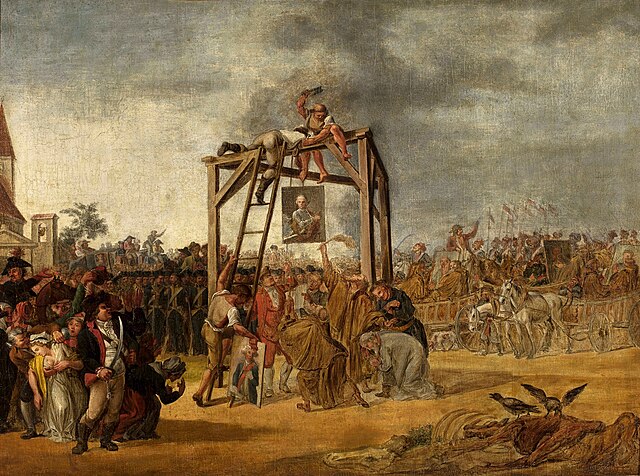The Targowica Confederation was a confederation established by Polish and Lithuanian magnates on 27 April 1792, in Saint Petersburg, with the backing of the Russian Empress Catherine II. The confederation opposed the Constitution of 3 May 1791 and fought in the Polish–Russian War of 1792, which led to the Second and Third Partitions of Poland.
Hanging in effigy of the Leaders of Targowica Confederation, Warsaw, 1794, in the aftermath of the Warsaw Uprising (1794). Painting by Jan Piotr Norblin.
Confederation (Poland–Lithuania)
A konfederacja was an ad hoc association formed by Polish–Lithuanian szlachta (nobility), clergy, cities, or military forces in the Polish–Lithuanian Commonwealth for the attainment of stated aims. A konfederacja often took the form of an armed rebellion aimed at redressing perceived abuses or trespasses of some authority. Such "confederations" acted in lieu of state authority or to force their demands upon that authority. They could be seen as a primary expression of direct democracy and right of revolution in the Commonwealth, and as a way for the nobles to act on their grievances and against the state's central authority.
The swearing in of the Tyszowce Confederation in 1655, painting by Walery Eljasz-Radzikowski.


